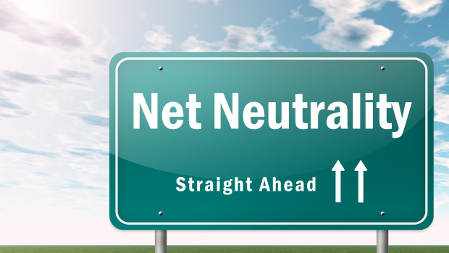A Twisted Look at Net Neutrality
A shocking headline occurred this week: AT&T called on Congress to pass net neutrality rules. Wow. This is the first time an MVPD or telco (AT&T is both) has switched sides in the argument and the occurrence reminded me of a recent conversation. At the end of a lunch with a friend, a senior managing director of a big consulting firm, he asked offhandedly, “What’s your take on this net neutrality thing?” A smile crossed my face. This was an opening I’d been looking for because I firmly believe the whole subject is entirely misunderstood.

The people who are pro net neutrality say, “a bit is a bit,” and, “my ISP should not throttle or change how bits are received based upon who is sending it.” They sometimes see the end of net neutrality as “the end of the internet as we know it.”
The people who are against net neutrality say, “it’s unnecessary government meddling,” and, “leave this to the marketplace.”
PEER TO PEER
What’s missing from both these arguments is an understanding of the subtleties of peering and how networks are connected. When two networks are connected voluntarily, it’s typically because there’s mutual benefit to both parties. If party A and party B exchange an equal amount of information, there’s no need for the parties to charge each other. This is sometimes called “settlement-free peering.”
Things change when traffic is very one-sided. If party A is delivering significantly more traffic via the network than party B, the “traffic ratio” is not balanced. Party B has to create and maintain network infrastructure to support Party A’s traffic without receiving a benefit in return.
The classic example is Netflix, who want their bandwidth-heavy video content to be delivered by ISPs such as Charter. The traffic flow of movies to end customers is immense, but the opposing flow from customers back to Netflix consists of only very light commands back through the network. Charter actually has a disincentive to carry Netflix content that might compete with Charter’s own video products. Paid-peering has been an important part of the solution. If it were not, the ISPs would be likely to charge different tiers of service for Netflix users, higher prices or meter bandwidth, none of which would be appealing to American consumers.
Those in favor of markets, instead of regulations, believe that in a free and fair market, prices settle and consumers can select the services they want. This would be their preferred approach to solving the net neutrality problem. The issue with the market argument is that many Americans have no choice of ISP; many are limited to just one high-speed provider, or at most two or three. That’s not even close to being a fair market.
BOTH ARE WRONG
In other words, both the people who support net-neutrality and those who are opposed are wrong. To find where I come out on this, you just need to read my post from a year ago. The best approach would be a robust market with options to provide true consumer choice, but that does not appear to be on the radar screen. Limited regulation is the next best solution.
That’s the context that helps explain AT&T’s change of position. AT&T has at least six reasons to support regulation:
1) An even playing field helps simplify their operation and prevent neutrality from becoming a competitive issue;
2) In the absence of federal rules, there are likely to be a myriad of state rules; a nightmare for a nationwide-ISP;
3) Net neutrality is essential to their DirecTV NOW OTT business;
4) By supporting legislation, they would be in a better position to ensure paid peering arrangements will be legal under the law;
5) If there are federal rules for the ISPs to play by, there’s less of a chance that they will be deemed monopolies and broken up, and don’t forget…
6) AT&T is still trying to purchase Time Warner and wants to be seen as being cooperative and content neutral.
If you are reading this article, it’s likely you work for a broadcaster or cable programmer and your company’s position on net neutrality is likely to be nuanced. Supporting the latest FCC ruling—no net neutrality—endorses the MVPDs who are enablers of the historic business models. It is a vote to maintain the MVPDs as the gate-keepers of the status quo for as long as possible. Supporting net neutrality legislation, as AT&T is doing, is an attempt to focus on future revenue and business models, but comes with the risk of enabling competitors to that future.
Regardless of where you sit, this one is worth watching carefully.
Larry Thaler is the President of Positive Flux, a consulting firm that specializes in helping media companies take advantage of the rapid changes occurring in the industry. He can be reached via TV Technology.
Get the TV Tech Newsletter
The professional video industry's #1 source for news, trends and product and tech information. Sign up below.
